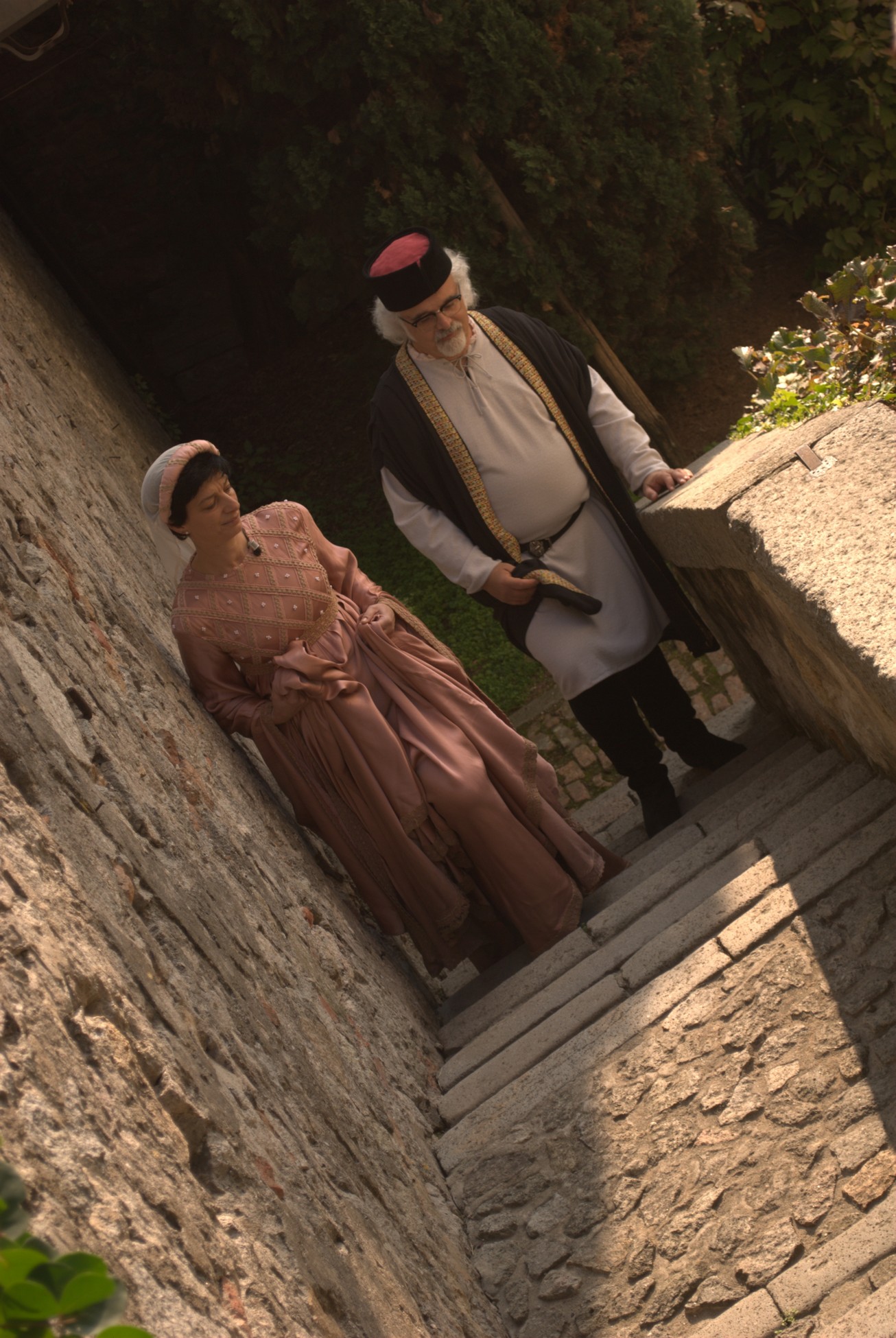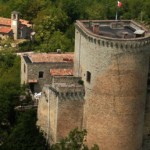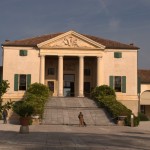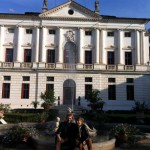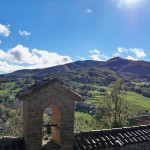The one of Troubadours of Provençe
The castle of Monselice
Who is afraid of ghosts?
The castle of Monselice is a peculiar building, having been a fortress, a defensive tower and a refined Venetian villa through the times. It is located near Abano Terme, between Padua and Rovigo.
Federico II and his son in law Ezzelino da Romano built this villa out of an old church in 1240, more or less. Ezzelino was very badly considered by his contemporaries, maybe because he belonged to Ghibellines, while historiography was much more Guelfic. Dante, Tassoni, and even Oscar Wilde later in time talked about him as a beast. However, the Ezzeliniana Tower is a military and civil architectural masterpiece, with some very modern details, for example water pipes.
Later in time, the castle has been conquered by the Carrara Family before and the Marcello family after (the same ones of Ca’ Marcello). The Marcello Family used to be full of great musicians, that’s why in the garden of the house there are some tiles dedicated to Art.The Tower is great, but it hides a dark side! There are many scaring stories about it, for example that of Ivalda, Ezzelino’s lover: he was always far, on battle, and she used to be unfaithful. According to legends, she was a sort of insatiable praying mantis, who seduced a lot of men and then sadistically killed them. Ezzelino ended to strangle Ivalda with his own hands, into the castle. Then there is the story of Jacopino da Carrara, who is said to have been left starving in a dungeon by his uncle Francesco, who was in competition with him for the dominion of Padua. The castle is said to be possessed by the ghosts of both Ivalda and of Jacopino! They are noisy and howling (who knows, maybe even they have an affair!). The Venetian Villas are just as fascinating as the Scottish Castles!
During the 1st World War, the castle of Monselice had been ruined and pillaged, but in the ’30s Count Vittorio Cini devoted himself to restore and decorate the villa, also with a very rich collection of old weapons. The tour is very interesting and the rooms are fascinating, with amazing fireplaces.
Nowadays the castle belongs to the Veneto region, that takes care of it and organizes many events. Moreover, a group of inhabitants of Monselice use to dress up in customs and put up the history: when we arrived there, they were practising. So exciting! Just like travelling in time.
⇒ Visit Monselice Castle official webiste ⇒ Your tour looking for Palladian Villas continues ⇒ Watch the full web serie Padua art & wellness slow tourVideo full text: Monselice Castle
Monselice Castle is an extraordinary place of great historical significance. On entering one feels a part of it… and is almost transformed. Lady Barbara, do I have to kiss your hand? Barbara is a tourist guide at Monselice Castle. Can you tell me the history of the castle? Of course. Let’s start with the Byzantines. This was around the 5th century AD. Barbara, let me help you with your gown, otherwise you’ll slip. During the 5th century this was a Byzantine fortress. Then, in around the year 600, the Longobards arrived. But that the Longobards are still there, right? Original, museum-type Longobards. This is scary – they’re real skeletons, not fakes! That bone still bears the mark of the sword that broke it. They’re huge! Two giants long-legged Longobards in fact. Then along came the Barbarians and wiped everyone out. The Longobards were followed by Frederick II of Swabia in around 1237, the one who constructed the castles in southern Italy! He even built a really significant one, right here. He chose this location because of the Monselice’s position. It was strategic, and not just for the Veneto region. The castle was then also used during the Renaissance. The entire area of Monselice became part of the Most Serene Republic of Venice. This is the room with the famous Carrarese fireplace. Most unusual. It is shaped like the mouthpiece of a flute, but it really is a fireplace! It bears this name because it was built by the Da Carrara family, the Lords of Padua, in around 1338. The family had a tortured family history. There were administrative problems for which Jacopino Da Carrara paid dearly. He was imprisoned in one of the castle’s rooms for 17 years, where he died destitute. I read in a tourist guide that there is also a ghost! Yes, the ghost of Avalda. She was the wife of Azzo d’Este and was repeatedly cuckolded by him. She then decided to plunge herself into carnal pleasures. Until, that is, her husband caught her and she was murdered in that room. She now wanders through the castle’s rooms at night, moaning. So there’s a lot of noise then: Jacopino screams in hunger and in anger, then there are Avalda’s lamentations. One is never alone in this castle. Jacopino is a historical figure, not quite sure about Avalda. Let’s leave that as an unanswered question. We like to think it might have been! Do you like being a tourist guide, Barbara? Very much so! Recounting a castle’s history is also reliving it. The atmosphere of this castle is beautiful. That’s also thanks to the citizens of Monselice who, in order to have fun and entertain visitors, bring it to life with living presences, which give the whole thing a touch of reality.
Produced in cooperation with the Official Tourist Board
Visit Padua: helpful hints
Italian name: PadovaArrival
Padua doesn’t have an airport. The nearest airport for international flights is the Venice Airport, but there is a bus leading directly to Padua (rides every hour, 8,5€). For transcontinental flights the nearest airport is the Bologna Airport. From the airport, first you have to reach Bologna Central Station by bus (rides every 15 minutes, it takes 30 minuts, 6€). From Bologna Central Station, both Trenitalia and Italo trains reach Padua in 50 minutes (ticket 10€, more or less).
Transports
You can visit Padua on foot or by bus. Single ticket costs 1,3€ and it lasts 75 minutes, more on FBus website.What to do
Padua is a stunning art city in Veneto region, close to Venice and Verona, in North Eastern Italy. It is famous for several art masterpiece that you simply must visit: start with the Giotto’s Scrovegni Chapel and Saint’s Anthony church. The University of Padua is one of the oldest and most important in Italy and in the whole Europe, here taught none other than Galileo Galilei and you can still visit its original Podium.
For a special break, look for the historic Caffè Pedrocchi and ask for their fine special caffè (a long espresso coffee with fresh mint cream and chocolate powder).
For more tips, watch the whole web serie we made about Padua and if you are fond of SPA tourism (or you just need some relaxing quality time) consider to spend some time on the Colli Euganei area, nearby. Pick one of the several SPA resort and enjoy the Roman baths and muds (try Abano Terme or Montegrotto Terme). From Padua, you can also reach easily many other interesting places, take a look to this itinerary through the amazing Palladian Villas of Veneto.

